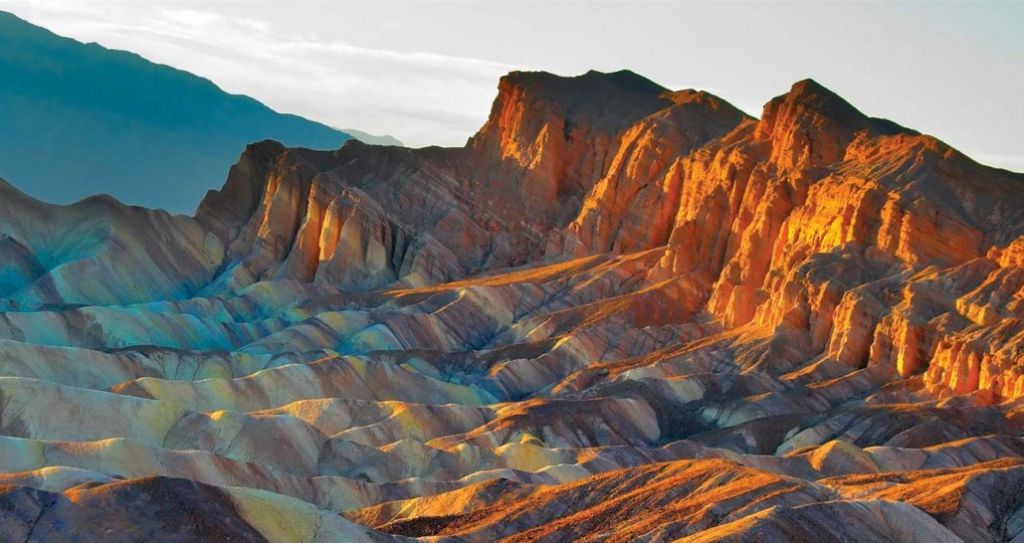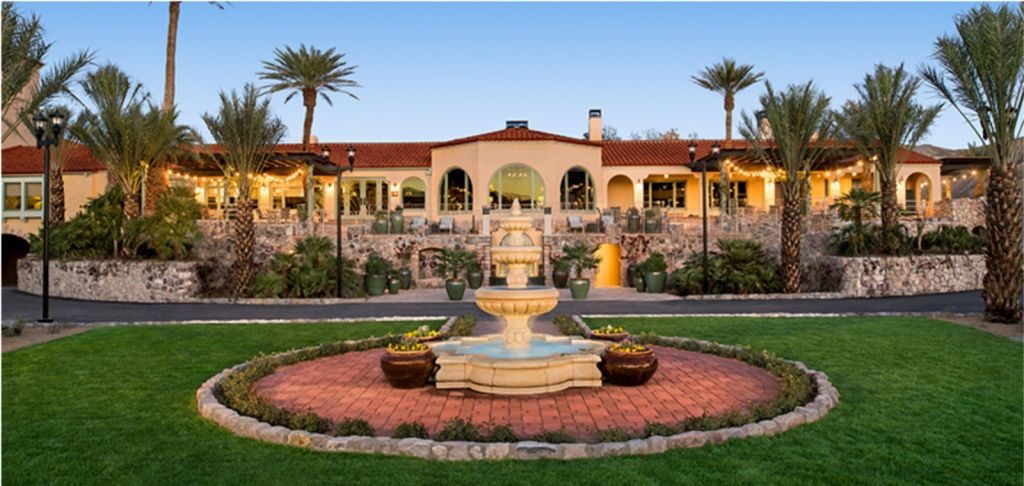Behind the Scenes with the Historian of the Oasis at Death Valley
It would have been totally understandable if David Woodruff never went back to Death Valley after his first visit at age nine.
His family camped over Memorial Day weekend and, not surprisingly, it was pretty darn hot.
“My mom was saying, ‘Gosh, if there were only a breath of air, just a bit of a wind for us,’” recalled the California historian who specializes in Death Valley. “We ate dinner and we’re all lying awake in the tent because it was so hot. Then, off in the distance, you could hear the winds coming toward us. The winds finally hit the tent after 20 minutes of roaring down the valley. Flattened it.”
They indeed proved to be ill winds for the family.
While driving to the ghost town of Skidoo on the high country road to the landmark Charcoal Kilns, “all of a sudden the engine on our Ford LTD station wagon started making a noise,” Woodruff says. “My dad turned off the engine and saw that the car was out of engine oil. Up on the Skidoo road. At the end of May.”
Apparently, the oil drain plug had been knocked loose when the car bottomed out in the campground. So Woodruff’s father pointed the station wagon downhill. Then, with the engine off and no power steering or brakes, he managed to coast all the way down to Stovepipe Wells. “It was harrowing,” says Woodruff.
Despite such a traumatic introduction, over the years Woodruff continued to visit Death Valley and eventually went to work at the Furnace Creek Inn, the original name of the historic Inn at Death Valley. As an avid hiker and backpacker, working at The Inn gave Woodruff and his wife Gayle the chance to get to know the area and also develop an expertise in its history. So in addition to guiding tours and delivering lectures, Woodruff, along with Gayle, eventually authored the book, Magnificent Oasis at Death Valley.
Here are some of Woodruff’s recollections of his years at The Inn, as well as his insights into the unique history of the resort.

Zabriskie Point, Death Valley National Park
Q: Why did you move to Death Valley?
A: My wife Gayle and I were looking for places to go hiking and started taking winter vacations in Death Valley. We would camp at the campground during January and February and had just a glorious time, for maybe one-third of the price that our friends paid to go to Mexico or Hawaii.
That started our fondness for Death Valley. Gayle was enamored with the wonderful winter weather and the overall beauty that Death Valley offered. We vacationed there almost every winter during the early 80s.
Once our son was done with college, we were in a financial position to sell our house and semi-retire. We were familiar with Death Valley and knew they had a lot of seasonal jobs that would allow us to take our summers off. So in the early 90s, (we went) out to Death Valley for a job interview. We were hired as the oldest busboy and busgirl on the property.
In the winter Death Valley is a hiking paradise, and we were able to hike on our days off and in the morning before work. We had what we considered probably the best lives in the world.
Q: How did you uncover the history of The Inn?
A: Even though U.S. Borax (formed when the Pacific Borax Co., which built the original Inn, merged with United States Potash Corp. in 1956) had sold the hotel property in 1968, they still came up to Death Valley a lot. They would do retreats and corporate meetings at the resort.
By 2001 we had developed such an interest in the history (of the resort) that we started collecting old postcards and borax advertising. Because I was in charge of food and beverage by then, when I saw on the banquet calendar that the borax company was coming, I thought we would do something extra special. So I made some centerpieces for the borax folks for their (dinner) tables. Old borax advertisements and things such as that.
The president of the borax company was there and I remember he picked up the centerpiece on his table and asked the waiter, “Where’d these come from?” The waiter pointed at me and I went and talked to the president, and he was quite pleased that I had an interest in the company.
He said, “We have this storeroom of stuff that you might find interesting. You should come down and look at it sometime. It took us almost a year but we finally went. The room was about 15 feet long and 10 feet wide, with shelves all around. Boxes, notebooks, binders — all kinds of things.
The borax company had saved literally every correspondence from way back in 1888, then onto building the hotel and onto selling it to the Fred Harvey Co. And everything in between. Not to mention tens of thousands of pictures.
Now we had this wealth of information that really no one in the modern day had gone through or looked at… (about) the history of the resort itself and how the borax company built it and what the hotel evolved into. If I had never had the good fortune to meet the president of the borax company at that banquet, none of this would have ever come about.

Q: What do you think of the recent $100 million renovation of The Inn?
A: I think it’s incredible. They did a really great job of preserving the historical integrity. When I worked there, I used to worry, almost chronically, about the hotel being able to continue on. Because let’s face it, it was an old hotel, and I saw all of the inner workings that needed attention. It’s absolutely incredible that (the Xanterra Travel Collection®) actually spent the kind of money The Inn needed and enabled that hotel to carry on for probably another ten decades.
The overall improvements? I love them, I think they’re great. Before I ever worked there, being a camping guest who would go and have an adult beverage on the deck at The Inn and look at the sunset view, that was one of my favorite ways to spend the late afternoon and early evening in Death Valley. But even as a guest, I couldn’t believe that the parking lot used to be right in front of The Inn.
Here you’re looking out on what I used to call a billion-dollar view and yet in the foreground were all of these cars. Car alarms and brake lights. (Guests) yelling at the kids when unloading the luggage. I found it disruptive the entire time I worked there. I thought that should be someplace else. Now you drive up and offload and there are no (parked) cars anymore. I love that.
And certainly all of the improvements at the pool. The pool has always been the centerpiece and now they have a real spa facility. Though I’m not a spa guy myself, I think that’s really nice.
Q: Can you share some of the hidden history of The Inn?
A: The room underneath The Inn, the Oasis Room, was a lounge and a restaurant at one time until it got converted into a banquet and meeting room space in 1996. It was the last structure and part of the hotel built in 1937.
The dining room and the entire building up above was already complete and done. But when Prohibition ended, they needed a bar and made a small makeshift thing in the back. It was extremely small, just enough space to have drinks. So they wanted a bigger lounge and they also wanted a second restaurant by the time the hotel got up to 66 rooms. They got the idea to put the new bar and second restaurant directly underneath the existing dining room and excavate the hillside out during the construction work. Someone got the idea that they were going to have to hold the upstairs up while they did the excavation, so they decided to dismantle the old railroad trestle that was about 16 miles to the east of the hotel.
The borax train used to run on it, hauling borax in the 1910s and early 1920s. It was made of beautiful Western white pine, ponderosa pine that came from Mt. Charleston near Las Vegas. They dismantled the bridge and brought these massive timbers to The Inn and stuck them under the building as they excavated. They did such a great job that they left the timbers there and incorporated them into the structure of the downstairs.
The timbers in the ceiling of the Oasis Room have been covered, but are still visible framing the doors. But the timbers are more visible in the Oasis foyer and the Big Horn Room. All three of these rooms were built at the same time and incorporated the same excavation and support method with the railroad trestle timbers. And the walls in one room are lined with colemanite, which was the most popular form of borax that they mined in Death Valley.
For more travel experiences available from Xanterra Travel Collection® and its affiliated properties, visit xanterra.com/stories.